Entertainment
Entertainment Centers: The Future of Fun, Leisure, and Business Growth
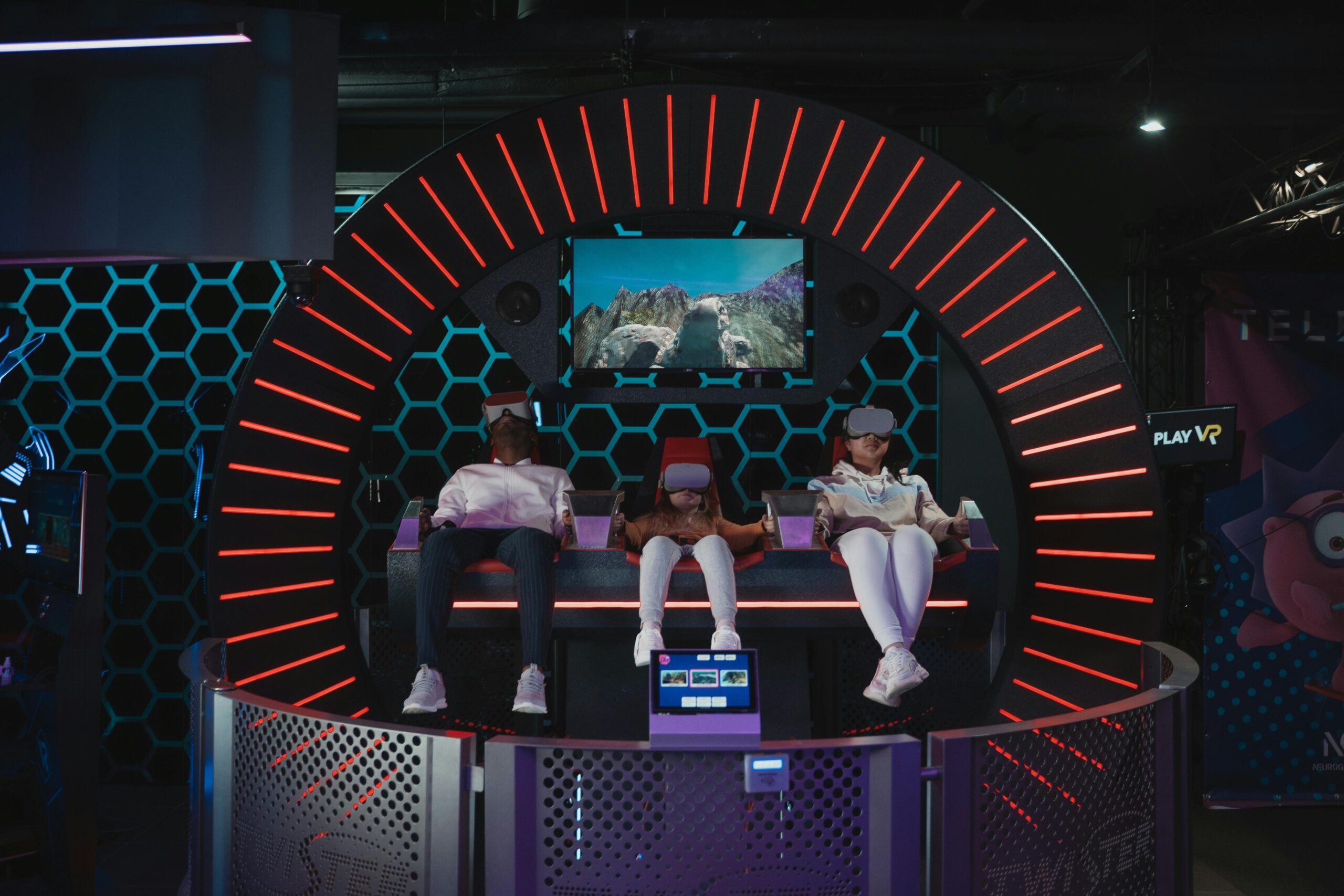
Introduction
Entertainment has always been an essential part of human life. From ancient theaters and music halls to today’s modern cinemas and amusement parks, people have consistently sought ways to relax, connect, and enjoy themselves. In the 21st century, entertainment centers have evolved into multifunctional spaces that combine leisure, technology, food, and social experiences under one roof.
Whether it’s a family entertainment center (FEC), a cinema multiplex, a bowling alley, or an indoor amusement park, these venues have become cornerstones of community engagement and profitable business ventures. The rise of experiential entertainment has created massive opportunities for entrepreneurs, investors, and cities looking to attract tourism.
In this blog, we’ll explore the world of entertainment centers, their types, business models, success factors, and the future trends shaping the industry.
What is an Entertainment Center?
An entertainment center is a venue designed to provide leisure, recreation, and amusement for individuals, families, and groups. Unlike traditional standalone attractions (like a simple arcade or theater), modern centers often combine multiple forms of entertainment in one space to maximize appeal.
These centers typically include:
- Games and arcades
- Cinemas or theaters
- Bowling alleys
- Virtual reality (VR) experiences
- Restaurants and food courts
- Indoor playgrounds
- Laser tag or mini-golf
- Live performance stages
By offering multiple activities, they create a one-stop destination for entertainment seekers.
Types of Entertainment Center Businesses
Entertainment centers vary widely in design and offerings. Below are some of the most popular categories:
1. Family Entertainment Centers (FECs)
FECs are indoor amusement venues catering to all ages. They often include arcades, laser tag, mini-bowling, and birthday party spaces. Examples include Chuck E. Cheese and Main Event Entertainment.
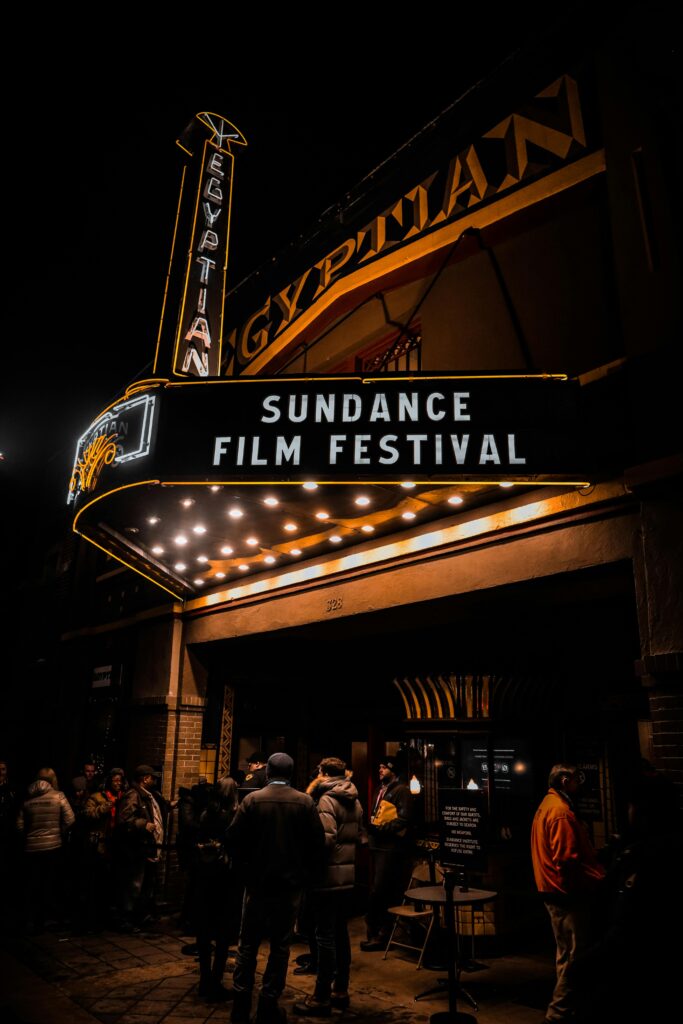
2. Cinema & Multiplex Venues
Cinemas have expanded beyond simple movie screenings, with modern multiplexes offering luxury recliners, gourmet food, and immersive technologies like IMAX and 4DX.
3. Indoor Trampoline Parks & Playgrounds
These are popular among kids and teenagers, offering trampolines, climbing walls, foam pits, and adventure courses. Brands like Sky Zone dominate this sector.
4. Bowling & Arcade Centers
Classic bowling alleys have been reimagined into vibrant centers with neon lighting, interactive screens, and full-service dining. Many combine bowling with arcade gaming.
5. Virtual Reality & Esports Arenas
VR and esports venues are the future of entertainment centers, allowing guests to step into immersive worlds or compete in gaming tournaments.
6. Amusement & Theme Parks (Indoor/Outdoor)
Although larger in scale, indoor amusement centers like IMG Worlds of Adventure (Dubai) represent hybrid venues blending rides, gaming, and dining.
7. Mixed-Use Entertainment Complexes
These combine shopping malls, dining, and entertainment in one mega-space. Examples include Mall of America (USA) and Dubai Mall (UAE).
Why Entertainment Centers Are Thriving
1. Demand for Experiential Leisure
Consumers, especially millennials and Gen Z, prefer experiences over possessions. Entertainment centers provide social, interactive, and memorable activities.
2. Family & Community Appeal
These venues are family-friendly, making them attractive for parents seeking safe, engaging spaces for children.
3. Tourism Boost
Cities use entertainment centers as tourist attractions to generate revenue and boost hospitality industries.
4. Revenue Streams
Entertainment centers generate income through ticket sales, memberships, food & beverage sales, merchandise, and event hosting.
5. Social Media & Marketing Power
Interactive experiences create shareable moments, which guests promote on Instagram, TikTok, and YouTube giving venues free advertising.
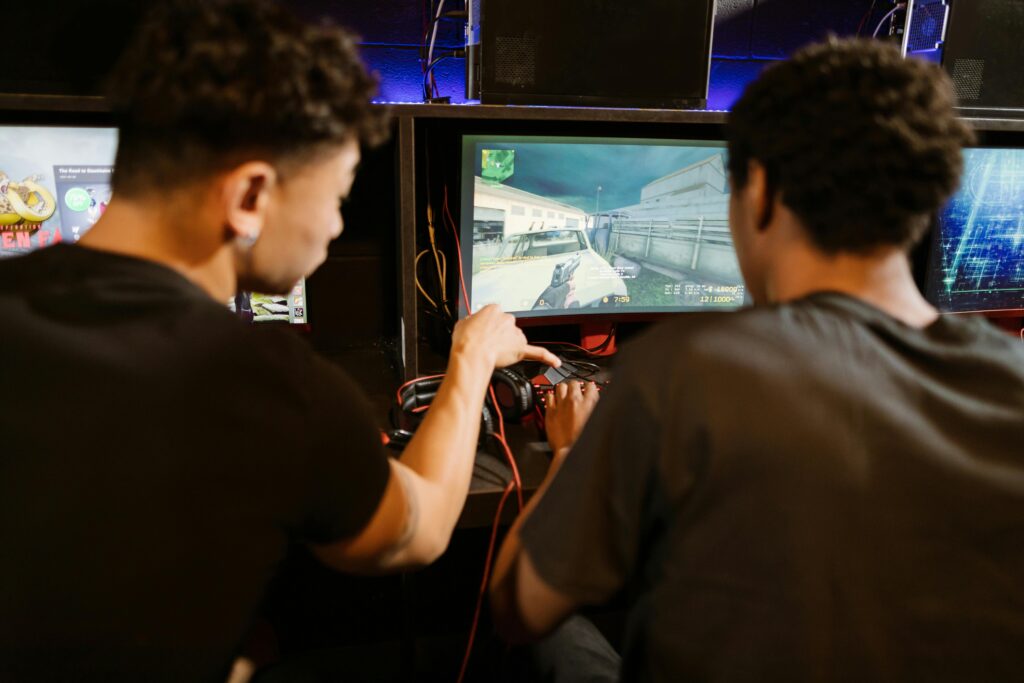
Business Models for Entertainment Centers
Entertainment centers operate on diverse models depending on size, location, and audience:
- Pay-Per-Play : Customers pay for individual activities (bowling, VR games, etc.).
- Unlimited Access Passes : Guests purchase day passes for unlimited play.
- Memberships & Loyalty Programs : Monthly memberships encourage repeat visits.
- Food & Beverage Integration : Restaurants and cafes generate significant secondary income.
- Event Hosting : Birthday parties, corporate events, and school trips are lucrative revenue streams.
Successful businesses often combine multiple models, maximizing customer spending per visit.
Key Success Factors for Entertainment Center Businesses
- Location Matters : Centers thrive in urban hubs, shopping malls, and tourist-heavy areas.
- Variety of Offerings : A mix of activities ensures appeal across different age groups.
- Customer Experience : Clean facilities, friendly staff, and smooth operations create repeat customers.
- Technology Integration : VR, AR, AI-driven games, and online booking systems improve convenience and engagement.
- Food & Beverage Quality : Many guests spend more on dining than games.
- Marketing & Branding : Strong social media presence and local advertising attract diverse audiences.
Challenges Facing Entertainment Centers
While the industry is growing, challenges remain:
- High Initial Investment : Building, equipment, and licensing require significant capital.
- Maintenance Costs : Machines, VR equipment, and rides need constant upkeep.
- Changing Consumer Trends :Entertainment preferences shift rapidly with new tech.
- Competition : With new venues opening, standing out is essential.
- Economic Downturns : In times of financial strain, families may cut leisure spending.
Smart operators counter these challenges through innovation, diversification, and cost management.

The Future of Entertainment Centers
The next decade will bring exciting transformations:
1. Virtual & Augmented Reality Growth
Expect more VR arcades, escape rooms, and AR gaming zones integrated into FECs.
2. Esports Integration
Esports tournaments attract massive crowds, and dedicated arenas will become key revenue drivers.
3. AI-Powered Personalization
Artificial intelligence will tailor gaming experiences based on visitor preferences.
4. Sustainable Entertainment
Eco-friendly designs and renewable energy use will appeal to conscious consumers.
5. Smart Venues
Digital ticketing, cashless payments, and interactive mobile apps will enhance efficiency.
6. Hybrid Entertainment + Retail Spaces
Malls and shopping complexes will increasingly merge retail, dining, and entertainment into mega-centers.
Case Studies of Successful Entertainment Centers
1. Dave & Buster’s (USA)
Combines arcade gaming, dining, and sports bars appealing to both families and adults.
2. KidZania (Global)
An innovative children’s edutainment center where kids role-play real-life careers.
3. Mall of America (USA)
Houses an indoor amusement park, aquarium, cinemas, and retail outlets under one roof.
4. Dubai Mall (UAE)
Blends luxury shopping with indoor ice rinks, VR parks, and a giant aquarium.
These examples highlight how entertainment centers succeed by offering variety, innovation, and strong branding.
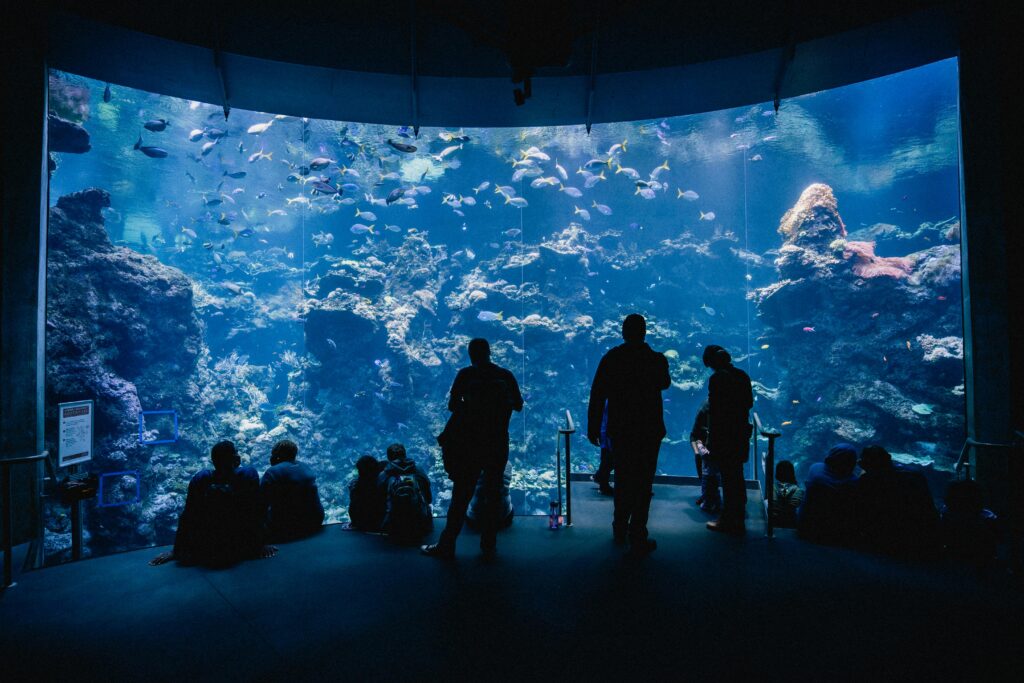
Conclusion
Entertainment centers are more than just places to play games or watch movies—they are dynamic hubs of social interaction, family bonding, and business innovation. With the rise of technology, changing consumer behavior, and growing demand for unique experiences, these venues are set to become even more integral to modern lifestyles.
For entrepreneurs and investors, the industry presents lucrative opportunities, provided they adapt to evolving trends and focus on customer satisfaction. From family entertainment centers and VR arenas to mixed-use mega complexes, the possibilities are endless.
As we move forward, entertainment centers will continue redefining leisure, making them not just places of fun, but also drivers of economic growth and community engagement.
Entertainment
Astroworld Festival: The Rise, the Tragedy, and Its Lasting Impact on Music Festivals

Introduction
Astroworld Festival, created by hip-hop superstar Travis Scott, was meant to be more than just a concert it was a musical universe inspired by his childhood memories of Houston’s iconic Six Flags Astroworld theme park. What began as a thrilling celebration of music, art, and culture quickly became one of the most talked-about festivals in the world.
However, the festival’s legacy took a tragic turn in November 2021, when a deadly crowd surge resulted in the loss of ten lives and injured hundreds more. This event not only shook the global music industry but also prompted serious questions about concert safety, event management, and artist accountability.
This article explores the rise of Astroworld Festival, the 2021 tragedy, and its lasting impact on live music culture.
The Birth of Astroworld Festival
Travis Scott’s Vision
Travis Scott, born Jacques Webster II, grew up in Houston, Texas a city that shaped his creative spirit. When the local Six Flags Astroworld amusement park shut down in 2005, it left a nostalgic void for many Houstonians. Years later, Scott decided to revive that energy in a new form: a festival that would merge music, art, rides, and Houston pride.
Launched in 2018, Astroworld Festival coincided with the release of his hit album Astroworld, which topped charts and earned multiple Grammy nominations. The event symbolized a homecoming for Scott and celebrated Houston’s unique culture.
A Unique Festival Experience
Unlike typical concerts, Astroworld offered a theme park-inspired environment. Each year, the festival featured carnival rides, elaborate stage setups, and immersive visual art installations. Fans described it as a “dreamlike world of sound and light,” where reality blurred into fantasy.
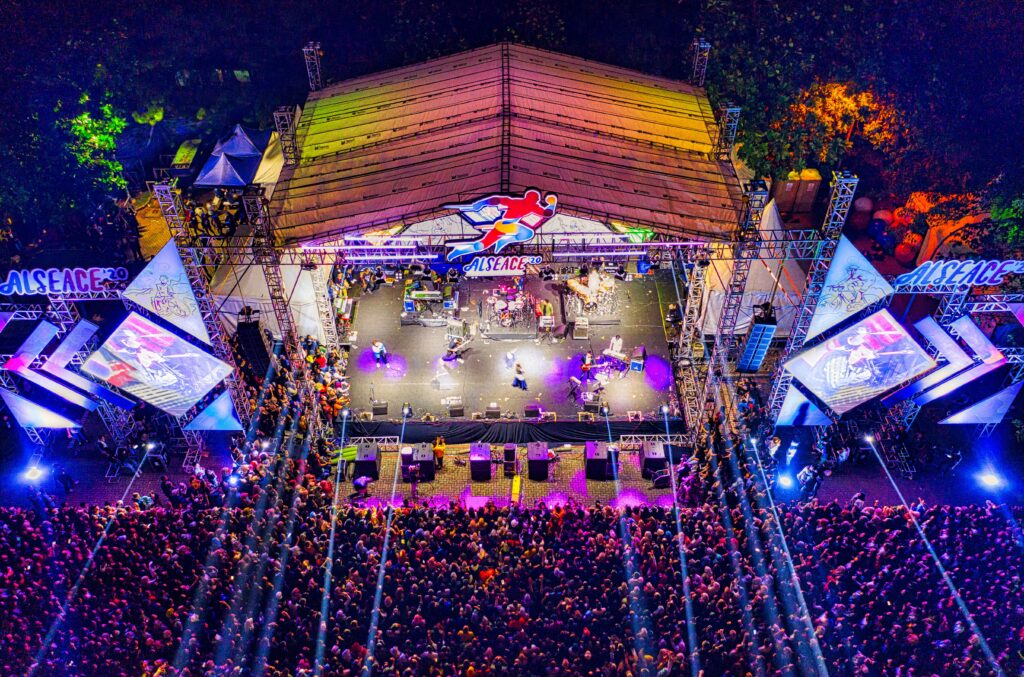
The first two editions in 2018 and 2019 were massive successes, selling out within hours and drawing fans from across the globe. The lineup included major artists such as:
- Post Malone
- Young Thug
- Lil Wayne
- Rosalía
- Pharrell Williams
Astroworld wasn’t just about music it became a cultural phenomenon symbolizing freedom, creativity, and youth energy.
The Astroworld 2021 Tragedy
The Night of the Incident
On November 5, 2021, nearly 50,000 fans gathered at NRG Park in Houston for the third edition of Astroworld Festival. The anticipation was enormous. However, as the night unfolded, tragedy struck.
During Travis Scott’s headline performance, a crowd surge occurred thousands of fans pushed toward the front of the stage, creating intense pressure and chaos. Within minutes, people began to collapse, suffocate, and lose consciousness. Despite signs of distress in the audience, the show continued for more than 30 minutes.
Casualties and Chaos
By the end of the night, ten people had died, including several teenagers, and hundreds were injured. Emergency services were overwhelmed, and videos of the incident circulated widely on social media, sparking global outrage.
Immediate Reactions
Authorities, fans, and the public demanded answers. Many questioned why the concert wasn’t stopped sooner. Travis Scott and event organizers Live Nation and ScoreMore faced severe criticism for poor crowd control, inadequate security, and delayed emergency response.
In the aftermath, hundreds of lawsuits were filed against the organizers and Travis Scott himself, with victims’ families seeking justice for what they saw as preventable deaths.
Investigation and Legal Outcomes
Who Was Responsible?
Investigations revealed several contributing factors:
- Overcrowding and lack of clear crowd control plans
- Insufficient medical staff on-site
- Failure to respond promptly to early distress signals
- Communication breakdown between event security, organizers, and performers
Although Travis Scott claimed he was unaware of the severity of the situation during his performance, many criticized him for not halting the show despite visible chaos.
Legal Actions
In 2023, nearly all wrongful-death lawsuits were settled confidentially. Some lawsuits remain pending, focusing on negligence and corporate accountability. While the Harris County grand jury declined to file criminal charges against Travis Scott, the event remains a significant case study in event management ethics.
Impact on the Music Industry
Safety Reforms and Awareness
The Astroworld disaster triggered global conversations about festival safety. Promoters and event managers began implementing stricter measures:
- Improved crowd monitoring using AI and drone surveillance
- Mandatory safety briefings for artists and staff
- Emergency stop protocols for performers
- Reduced capacity limits at high-energy concerts
Festivals like Coachella, Rolling Loud, and Lollapalooza have since enhanced their safety infrastructure and training programs.
Changes in Artist Responsibility
Before Astroworld, few artists were expected to control or stop performances during emergencies. Now, performers are encouraged and sometimes legally required to pause shows if they observe distress in the crowd. Artists such as Billie Eilish, Harry Styles, and Adele have since stopped performances mid-set to assist struggling fans, citing lessons learned from Astroworld.

Insurance and Legal Implications
Event insurance policies also evolved. Organizers now face higher premiums and stricter requirements for risk management, crowd modeling, and medical support.
Cultural and Emotional Aftermath
Fan Reactions
The tragedy deeply affected fans who once idolized Travis Scott. While some remained loyal, others boycotted his music and branded the event as a symbol of negligence and excess in modern celebrity culture.
Travis Scott’s Response
In a public statement, Travis Scott expressed grief and launched an initiative called Project HEAL, aimed at improving concert safety and providing scholarships for underserved communities. However, critics argue that the gesture was too little, too late, and that his brand image remains tarnished.
Public Debate on Accountability
The Astroworld tragedy reignited debates about artist responsibility, event oversight, and fan culture. It also exposed how social media can amplify real-time events, shaping public opinion instantly and influencing legal outcomes.
Astroworld’s Legacy in 2025 and Beyond
The End of Astroworld Festival
Following the tragedy, Astroworld Festival was permanently canceled. Travis Scott has since performed at other venues, but the shadow of Astroworld continues to follow him. For many, the festival’s name has become synonymous with both creative ambition and cautionary failure.
Influence on Future Festivals
Astroworld’s lessons have influenced new generations of festival organizers. In 2025, most large-scale festivals now include:
- Real-time crowd heat maps
- On-site mental health teams
- Emergency communication systems
- Pre-event safety simulations
These innovations are saving lives and reshaping how festivals operate.
Artistic Legacy
Despite the tragedy, Astroworld’s earlier editions revolutionized how music festivals integrate visual storytelling, digital art, and interactive environments. Its creative design still inspires stage production and virtual concert experiences in 2025.

Lessons Learned from Astroworld
1. Safety Over Spectacle
Astroworld proved that no matter how grand an event’s vision, safety must always come first. Proper planning, crowd flow design, and emergency readiness can make the difference between life and death.
2. Clear Communication
Miscommunication among staff, artists, and security was a major factor. Festivals now prioritize real-time communication systems to ensure immediate response during emergencies.
3. Accountability and Empathy
Artists and organizers must show empathy and accountability. Public trust in entertainment relies on knowing that fan well-being is valued above performance or profit.
Conclusion
Astroworld Festival was once a symbol of artistic freedom, youthful energy, and innovation. Yet, it will forever be remembered for one of the darkest moments in live music history. The tragedy of 2021 reshaped how festivals are organized, how artists engage with their audiences, and how safety is prioritized in entertainment spaces.
While the wounds left by Astroworld may never fully heal, the lessons learned continue to protect lives and inspire change in the global music industry. In many ways, Astroworld’s downfall became a turning point reminding us that the power of music must always be matched with responsibility, awareness, and care.
Entertainment
Snow Falling on Cedars: A Timeless Tale of Love, Justice, and Memory

Few novels capture the intersection of human passion, cultural prejudice, and the weight of history as powerfully as Snow Falling on Cedars, David Guterson’s award-winning 1994 masterpiece. Blending a murder mystery with a deeply moving love story, the novel is set against the backdrop of post World War II America, when prejudice against Japanese-Americans was still painfully alive.
Later adapted into a visually stunning film in 1999, Snow Falling on Cedars continues to resonate with readers and viewers, reminding us that beneath the beauty of falling snow and cedar forests lies a story of injustice, silence, and resilience.
In this blog, we’ll explore the novel’s plot, themes, characters, symbolism, and legacy, while also looking at the film adaptation and its cultural significance.
A Glimpse Into the Story
Setting
The novel is set on San Piedro Island, a fictional community in Washington State’s Puget Sound. Known for its fishing industry and close-knit population, the island becomes the stage for both romance and courtroom drama.

Plot Overview
At the heart of the story is the trial of Kabuo Miyamoto, a Japanese-American fisherman accused of murdering Carl Heine, a fellow fisherman of German descent. The trial not only raises questions about evidence and justice but also exposes the deep racial prejudices still present in the community after the war.
Parallel to the trial is the story of Ishmael Chambers, a local journalist who once had a romantic relationship with Hatsue Miyamoto, Kabuo’s wife. Their youthful love, shattered by cultural divides and wartime internment, haunts both characters as adults.
The courtroom drama unfolds while memories of love, war, and prejudice resurface. Ultimately, the novel questions whether truth and justice can prevail in a world clouded by bias.
Themes and Motifs
1. Racism and Prejudice
One of the central themes of Snow Falling on Cedars is racial prejudice against Japanese-Americans. After the attack on Pearl Harbor, thousands of Japanese-American families were forced into internment camps. Even after the war, suspicion and resentment lingered. Kabuo Miyamoto’s trial is less about facts and more about these societal biases.
2. Love and Loss
The doomed romance between Ishmael and Hatsue highlights the painful consequences of cultural divisions. Despite their deep affection, Hatsue ultimately chooses her Japanese heritage over a forbidden love, leaving Ishmael heartbroken.
3. War and Memory
The novel examines how war shapes individuals and communities. Ishmael, a war veteran who lost his arm, struggles with both physical and emotional scars. The community itself bears collective wounds, shaping how people judge one another.
4. Justice and Truth
The courtroom setting becomes a metaphor for truth-seeking in the face of prejudice. The novel asks: Can justice truly be blind, or is it always clouded by human bias?
5. Nature and Symbolism
The recurring imagery of snow and cedar trees reflects both beauty and silence. Snow covers the island, symbolizing purity but also concealment, while cedars represent endurance and the weight of history.
Characters
Kabuo Miyamoto
A quiet, disciplined fisherman accused of murder. Kabuo embodies the struggles of Japanese-Americans in postwar America caught between loyalty to their heritage and prejudice from their neighbors.
Hatsue Miyamoto
Kabuo’s wife and Ishmael’s former love. Hatsue is torn between duty to her family and her personal feelings, representing the complexity of cultural expectations.
Ishmael Chambers
The local journalist who lost his arm in World War II. Ishmael’s unhealed wounds—both emotional and physical reflect the personal cost of war. His bitterness over losing Hatsue influences his judgment, making him a morally complex character.
Carl Heine
The murder victim, whose death sparks the trial. His background and strained relationship with Kabuo highlight tensions over land, heritage, and pride.
Nels Gudmundsson
Kabuo’s defense lawyer, who champions fairness and justice despite the odds.
Symbolism
- Snow: Represents silence, concealment, and purity. Just as snow covers the island, truth is hidden beneath layers of prejudice and memory.
- Cedars: Symbolize endurance, history, and nature’s permanence compared to human conflicts.
- The Sea: Represents both livelihood and danger, highlighting the connection between the islanders and nature’s unpredictability.

- Ishmael’s Arm: A symbol of loss, sacrifice, and the lasting scars of war.
The Writing Style
Guterson’s prose is poetic, descriptive, and deeply atmospheric. His writing captures both the natural beauty of the Pacific Northwest and the emotional depth of his characters. The alternating perspectives between courtroom scenes, flashbacks, and inner thoughts create a layered narrative that feels both intimate and universal.
The 1999 Film Adaptation
Directed by Scott Hicks, the film adaptation of Snow Falling on Cedars is visually stunning, though it received mixed reviews for pacing.
Highlights of the Film:
- Cast: Ethan Hawke (Ishmael Chambers), Youki Kudoh (Hatsue), Reeve Carney, and Max von Sydow.
- Cinematography: Known for breathtaking visuals of snow, sea, and forests, capturing the haunting beauty of the setting.
- Tone: Moody and atmospheric, reflecting the novel’s themes of silence and memory.
While the novel delves deeply into character psychology, the film emphasizes mood and visual storytelling. Many critics praised its artistry but noted that it lacked some of the emotional complexity of Guterson’s prose.
Critical Reception
- The novel won the 1995 PEN/Faulkner Award for Fiction.
- It was a bestseller, translated into multiple languages.
- The film adaptation received Academy Award nominations for cinematography but was less commercially successful.
Legacy of Snow Falling on Cedars
More than 30 years after its publication, Snow Falling on Cedars remains a literary classic studied in schools and universities. Its themes of prejudice, love, and justice continue to resonate in contemporary society.
The story reminds us that history’s injustices linger long after the events themselves, and that silence like snow can hide painful truths.
FAQs
1. What is Snow Falling on Cedars about?
It’s about a Japanese-American fisherman accused of murder, a courtroom trial, and the lingering effects of racism, war, and forbidden love.
2. Is Snow Falling on Cedars based on real events?
While the characters and island are fictional, the novel draws on real historical events—especially the internment of Japanese-Americans during WWII.
3. What genre is Snow Falling on Cedars?
It blends literary fiction, historical fiction, and courtroom drama.
4. Is the film faithful to the book?
The 1999 film captures the novel’s atmosphere and visuals but condenses character depth, focusing more on visuals than internal struggles.
5. Why is the novel significant today?
Its exploration of racial prejudice and justice remains deeply relevant in a world still grappling with issues of discrimination.
Conclusion
Snow Falling on Cedars is more than a murder mystery it’s a meditation on love, prejudice, and memory. Through the snow-covered cedar forests of San Piedro Island, David Guterson paints a haunting portrait of a community struggling to reconcile truth with bias, love with duty, and past with present.
Nearly a century after the events it depicts, its lessons remain vital: truth can be buried under silence, but like snow melting in spring, it eventually comes to light.
Entertainment
The Exciting World of Baseball Video Games: A Complete Guide

Introduction
Baseball is one of the most beloved sports in the world, and for decades, baseball video games have allowed fans to experience the thrill of the game right from their living rooms. Whether you enjoy managing a team, hitting home runs, or reliving the glory of legendary players, baseball video games bring the spirit of the ballpark to life.
In this blog, we’ll explore the history, top titles, gameplay styles, and future trends of baseball video games.
A Brief History of Baseball Video Games
The journey of baseball in the gaming industry dates back to the late 1970s and early 1980s. Early titles like Atari’s Home Run (1978) and Nintendo’s Baseball (1983) were simple, with minimal graphics and mechanics. However, these games laid the foundation for what would become a beloved gaming genre.
By the 1990s, titles such as RBI Baseball and Ken Griffey Jr. Presents Major League Baseball elevated the genre with better graphics and licensed teams. Today, modern baseball games combine advanced visuals, realistic physics, and online multiplayer modes to create an immersive experience.

Popular Games to Play
1. MLB The Show Series
- Available on PlayStation, Xbox, and Nintendo Switch.
- Known for its realism, detailed graphics, and official MLB licenses.
- Offers modes like Road to the Show (career mode), Diamond Dynasty, and Franchise Mode.
2. RBI Baseball
- A simpler, arcade-style game.
- Great for players who want quick, fun matches without deep simulation.
3. Super Mega Baseball
- Focuses on fun gameplay with cartoon-style graphics.
- Still offers advanced mechanics like pitching strategies and team customization.
4. Out of the Park Baseball (OOTP)
- A text-based simulation game.
- Perfect for fans who love managing rosters, finances, and strategies behind the scenes.
Why People Love Baseball Video Games
- Realism and Immersion – From player animations to stadium details, modern games look almost like live broadcasts.
- Accessibility – Fans who can’t attend real matches still enjoy the game virtually.
- Variety of Gameplay – Whether you like arcade fun or deep management, there’s a baseball game for you.
- Community & Online Play – Competing against friends worldwide adds excitement.
The Future of Baseball Video Games
With technology evolving, baseball games are becoming even more realistic. Expect to see:

- Virtual Reality (VR) baseball games where you swing using motion controls.
- AI-driven gameplay with smarter opponents.
- Esports tournaments featuring baseball titles.
FAQs About Baseball Video Games
Q1: What is the most realistic baseball video game?
MLB The Show is widely considered the most realistic due to its official MLB licenses, player likeness, and advanced mechanics.
Q2: Can I play baseball games on PC?
Yes, options like Out of the Park Baseball and Super Mega Baseball are available on PC.
Q3: Are there free baseball video games?
Yes, some mobile games and online platforms offer free-to-play baseball experiences.
Q4: Which is better: arcade or simulation baseball games?
It depends on your style. Arcade games are quick and fun, while simulations are detailed and realistic.
Q5: Will VR baseball games become popular?
With VR growing fast, baseball VR titles are expected to become mainstream in the near future.
Conclusion
Baseball video games have come a long way from pixelated batters to lifelike simulations. Whether you’re a casual fan or a hardcore gamer, there’s a baseball game that suits your style. From MLB The Show to indie hits like Super Mega Baseball, the digital diamond is as exciting as the real one.
-

 Fashion3 months ago
Fashion3 months agoThese ’90s Fashion Trends Are Making a Big Comeback in 2025
-

 Fashion3 months ago
Fashion3 months agoTop Fashion Trends to Follow in August 2025
-

 How-To Tutorials & Troubleshooting3 months ago
How-To Tutorials & Troubleshooting3 months agoHow to Fix Missing Pantone Color Books in Adobe Illustrator 2024-2025 (Free and Easy Method)
-
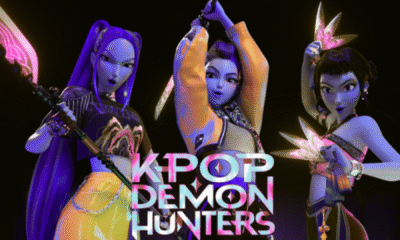
 Entertainment3 months ago
Entertainment3 months agoTrending Soundtrack: “KPop Demon Hunters”
-
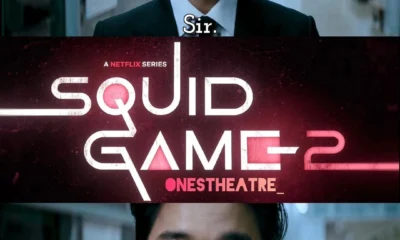
 Entertainment3 months ago
Entertainment3 months agoSquid Game Season 2: Deadlier Games, Deeper Secrets & Darker Drama




